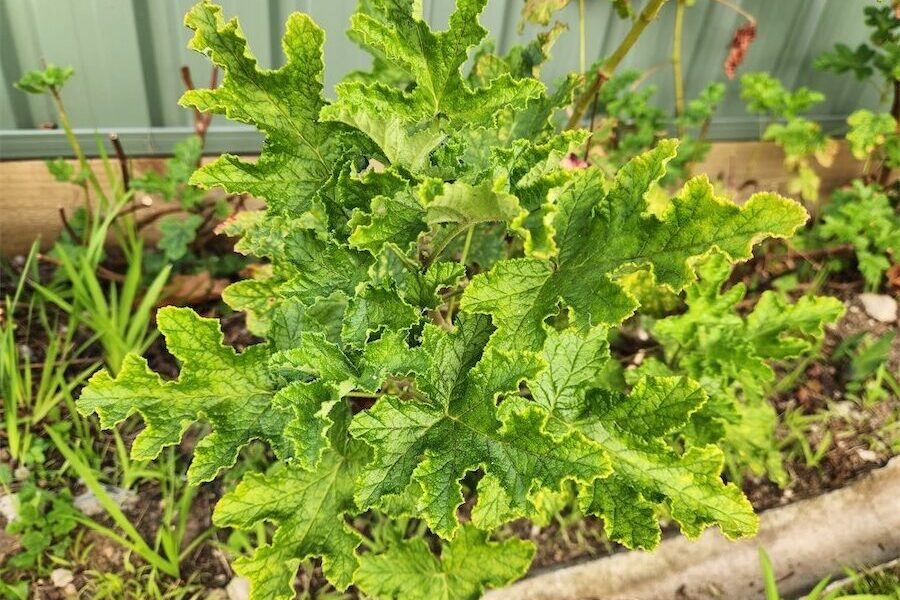
While some plants are hit by the mid-winter frosts, gardening columnist JACKIE WARBURTON says there is an old, trusty one that keeps thriving, unaffected at all – meet the rose-scented geranium.
The rose-scented geranium (Pelargonium graveolen) is a tough, trusty plant that grows to about a metre tall and wide, needing little care. It can be chopped to keep it in check.

Most pelargoniums have scented leaves with their aroma ranging from lemon, peppermint or rose.
Plant it on pathways or around outdoor entertaining areas where it can be brushed, to help release the aroma.
While it can be pungent to some, it’s a good deterrent around the vegetable patch to confuse small, night-eating animals and mosquitos.
It’s easy to propagate. Strike cuttings in a vase of water or take cuttings and leave them to dry for a few days, then pot them into a propagation mix.
To get pelargoniums to flower well in the garden, they’ll need at least six hours of sunlight a day.
However, some pelargoniums suffer from the cold if they have too much moisture in the winter, so keep them as dry as possible through the cold months and when the weather warms bringing new growth, use flower fertiliser to get them going.
IT’S a sheer delight to see native male bowerbirds busily creating an “avenue” – a female-attracting ground dwelling structure with leaves and twigs.
Bowers are created in a north-south direction and the entrance is decorated with anything blue the males can find – pieces of plastic, bottletops or even clothesline pegs in urban environments. Further in the bush, the bower can be decorated with blue berries, flowers and feathers to attract a mate.
Both male and female bowerbirds have dark eyes, but their adult feather colours are nothing alike. The female is green/grey and the males have the most exquisite blue-black colouring.
After the hard work of attracting is done, the female bowerbird will create a nest high off the ground and away from the avenue to raise the young on its own.
Bowerbirds are more common in the southern parts of Canberra. To attract them to the garden is as easy as adding blue native flowering plants such as Dianellas, lilly pillies and other native berries. In the summer breeding time, the birds will supplement their diet with insects and leaves.
Importantly, not using any pesticide also helps in attracting them to the garden. And don’t forget to leave a shallow dish of water out for them, too.
AT this time in winter there are limited vegetables that can go into the garden. However, in a sheltered and protected spot, planting broad beans, peas and spinach is still possible, but the germination will be slow.
The seeds will need overnight protection with a cloche until germination.
WITH spring on its way, it’s time to tidy perennial fruits and vegetables, such as strawberries, rhubarb and silverbeet, by removing old leaves from the base of the plant to allow light in and create space for new growth.
If the garden beds are fallow for the winter season, they should be turned over every few weeks to aerate the soil and keep the weeds at bay. Then they’ll be ready for when the soil warms in October.
Jottings…
- Divide rhubarb crowns and replant with added manure.
- Plant deciduous trees, plants and shrubs now and in the next few months.
- Plant casuarinas, white cedars and wattles to attract gang gangs to the garden.
Who can be trusted?
In a world of spin and confusion, there’s never been a more important time to support independent journalism in Canberra.
If you trust our work online and want to enforce the power of independent voices, I invite you to make a small contribution.
Every dollar of support is invested back into our journalism to help keep citynews.com.au strong and free.
Thank you,
Ian Meikle, editor





Leave a Reply